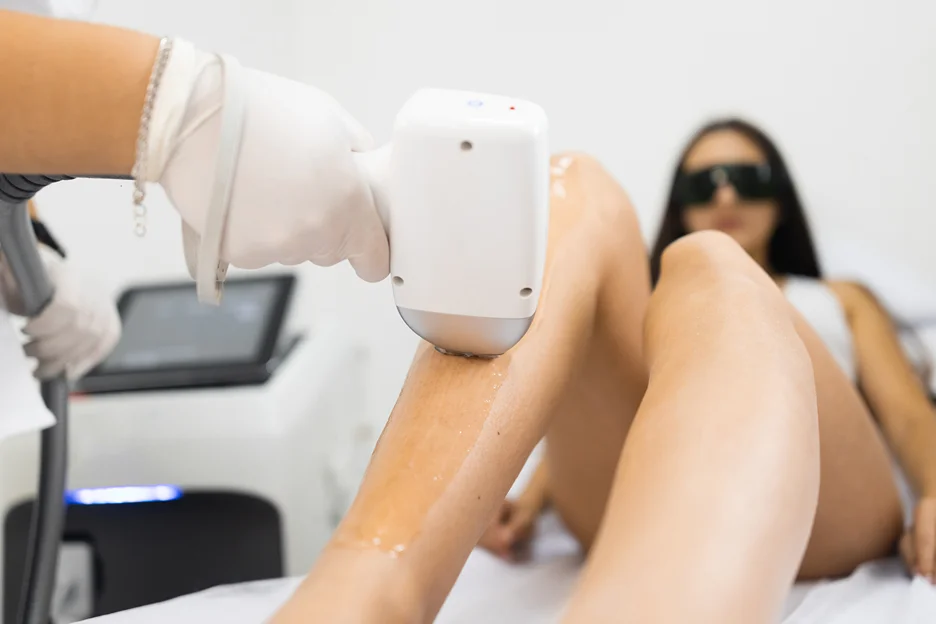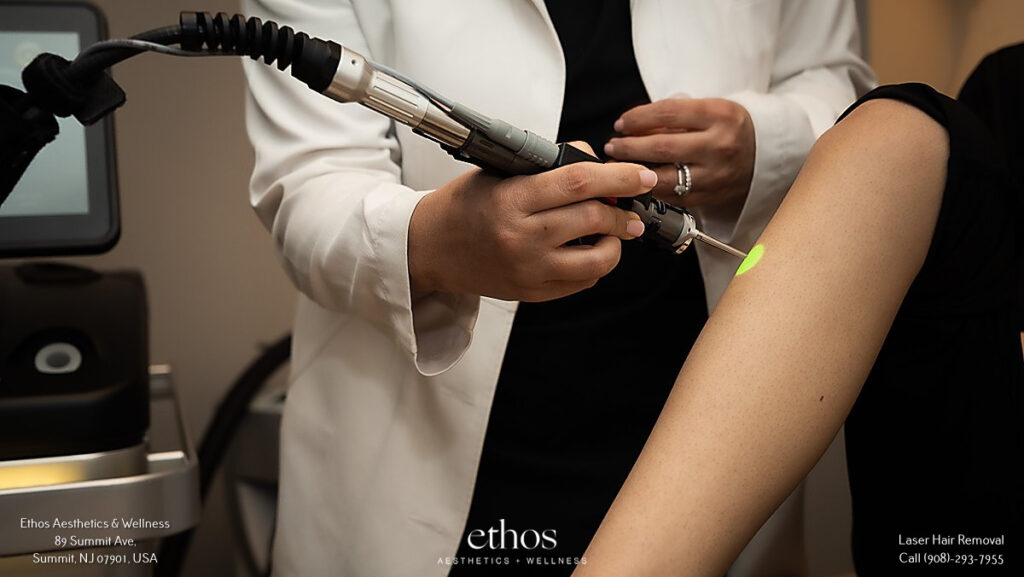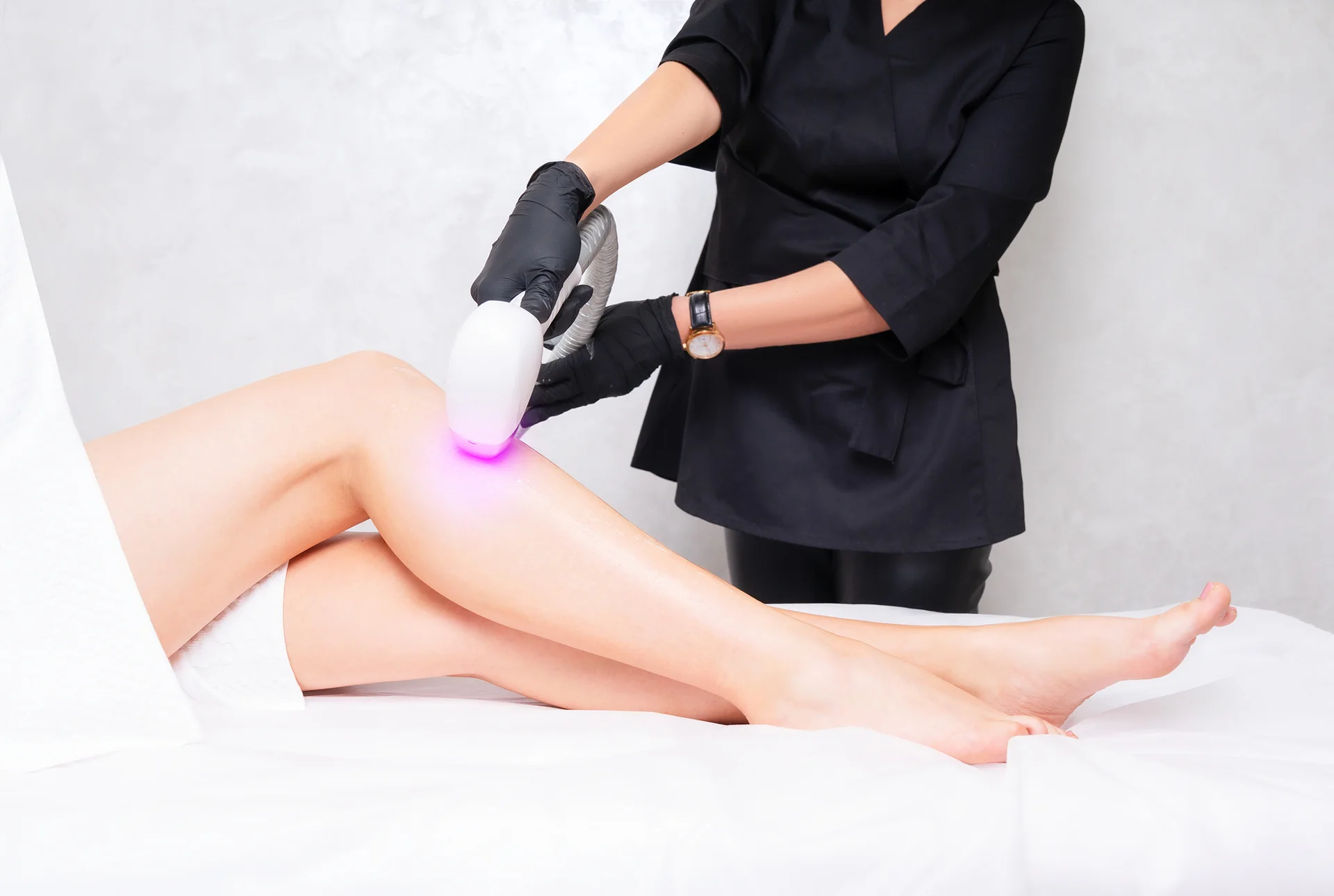Laser Hair Removal Side Effects: The Good, Bad, and Hairless Truth
Flawless skin without the hassle of shaving – it seems too good to be true. But laser hair removal promises just that – a chance to say goodbye to unwanted body hair for good.
As one of the most popular cosmetic procedures worldwide, over 750,000 laser hair removal treatments were performed in the U.S. in 2020 alone. With its promise of silky smooth skin, it’s no wonder why lasers have become the gold standard for permanent hair reduction.
But is laser hair removal right for you? And more importantly, is it safe?
While lasers offer longer-lasting results than shaving or waxing, they don’t come without risk. Laser hair removal has potential side effects ranging from minor irritation to permanent scarring in rare cases.
So how do lasers remove hair, and what should you know before getting treated? Let’s look at the facts about laser hair removal, its benefits and drawbacks, and how to get the smoothest skin with the least risk.
How Does Laser Hair Removal Work?
First, it helps to understand what makes laser hair removal different from other methods.
Lasers are powerful beams of targeted light energy. They work by selectively heating up dark pigments like melanin found in hair. This laser energy gets absorbed by hair follicles while leaving the surrounding skin relatively unaffected.
The heat damages the hair follicle, effectively stunting hair growth in the area. Damaged follicles can no longer sprout new hairs, leading to long-term hair reduction.
So while lasers don’t permanently destroy every single hair follicle, they significantly slow hair growth over time. This gives much longer-lasting results than temporary methods like shaving or waxing that only remove already visible hair.
A typical session goes like this:
- The laser equipment is set up with parameters customized to your skin and hair color.
- You’ll wear special goggles to protect your eyes from the laser light.
- A handheld laser device glides over the treatment area, delivering pulses of intense light to target the hair follicles.
- Each laser pulse feels like a quick, warm pinprick or rubber band snap on the skin.
- Multiple treatments spaced 4-6 weeks apart are required to catch hair follicles in the right stage of growth.
- Most people need 4-6 sessions for decent hair reduction, although results can take 6 months or more to fully appear.
Now that you know how lasers remove hair, let’s look at the potential benefits and risks involved.
The Pros: Why Choose Laser Hair Removal?
Lasers offer a long-term solution for silky smooth skin, with results that far outlast shaving or waxing. Let’s look at the main upsides:
- Long-lasting results: On average, laser hair removal provides an approximately 60% permanent reduction in hair growth after 3-5 treatments. While not every single hair is eliminated, it provides longer relief from shaving compared to other methods.
- Targets large areas: Lasers can treat both small and large body zones like the legs, arms, underarms, bikini area, chest, shoulders, back, and even the face. A full-body treatment takes under an hour.
- Works for most skin and hair types: Lasers have preset parameters to customize treatments based on your skin tone and hair texture. They work for all skin colors from fair to dark when performed correctly. Coarse, dark hairs respond best.
- Little to no hair regrowth between sessions: You only have to shave/wax occasionally between the spaced-out laser sessions. Compare this to the constant maintenance required for other hair removal methods.
- In-office procedure with no downtime: Laser hair removal is performed at dermatology clinics and medspas. There’s no major preparation or recovery afterward, allowing you to return to normal activities right away.
Now let’s look at the other side of the story – the cons and risks involved with laser hair removal.
The Cons: What Are the Risks and Side Effects?

While laser hair removal has advantages over other methods, it does come with potential side effects ranging from mild to rarely, severe. It’s important to consider the risks before choosing laser treatments.
These are the most common side effects and complications that can occur:
Mild and Temporary Side Effects
- Pain and Discomfort: Most patients feel some stinging, prickling sensation during the laser pulses. This may continue as a mild burning or itching for a few hours afterwards. Taking OTC pain medication before treatment can help.
- Skin Irritation: Temporary redness, swelling and warmth around the hair follicles is common after laser sessions. It typically resolves within a few hours but can last days. Applying ice packs helps ease irritation.
- Pigment Changes: The treated skin area may slightly lighten or darken for a few weeks after laser treatment. This is more likely for those with darker skin tones.
- Blistering and Crusting: In rare cases, intense laser heat causes fluid-filled blisters or crusty scabs to develop. Avoiding sun exposure reduces this risk.
- Hair Regrowth: The treatment reduces but does not always eliminate hair. Some hair regrowth after several months is common, requiring maintenance treatments.
Serious but Less Common Side Effects
- Scarring: Severe blistering, crusting, and burns come with a small risk of permanent scarring. Those prone to keloids are at higher risk.
- Skin Discoloration: In some cases, the bright laser light causes hypo/hyperpigmentation – light or dark skin patches that may be permanent without treatment.
- Skin Infection: Open wounds from blisters, burns, or ingrown hairs can get infected if not properly treated. This causes added pain, swelling, and scarring.
- Eye Injuries: Laser light can seriously damage the eyes. Protective goggles must be worn to avoid accidental eye exposure leading to blindness.
Who Is Most at Risk for Laser Hair Removal Side Effects?
While anyone can experience side effects, certain groups are at higher risk:
| People at Higher Risk of Laser Hair Removal Side Effects | Reason |
| Those with very dark skin tones – Types V and VI on the Fitzpatrick scale | Greater risk of burns and pigment changes from the laser treatment |
| Individuals who tan easily or have recent sun exposure/tanning | The laser targets the darker pigment, increasing chance of blistering and discoloration |
| People with conditions causing abnormal skin pigmentation like vitiligo, melasma, psoriasis | The laser may react with affected patches of light or dark skin |
| Those with excess facial hair growth linked to hormonal imbalances like PCOS | The root hormonal cause may continue triggering new growth despite laser removal |
| Patients with pacemakers, implants, and tattoos | The laser could potentially interfere with devices or react with tattoos |
| People using medication causing photosensitivity, like some antibiotics and acne medication | This makes the skin hypersensitive to light |
| Individuals with very coarse, dense hair growth that is resistant to laser damage | Results take longer compared to fine, soft hairs |
Can Laser Hair Removal Cause Long Term Health Risks?
There has been some speculation about potential cancer risks linked to laser radiation exposure. However, studies confirm lasers used at proper parameters cause no DNA damage or documented risk of cancer.
Still, it’s recommended you avoid laser hair removal if:
- Pregnant or breastfeeding – Due to lack of safety data for the fetus/baby. Hormone changes also affect treatment results.
- Active skin infections – Can worsen infection, leading to scarring.
- Certain medications – Photosensitizing medications like some acne treatments increase laser side effects.
- Specific medical conditions – Lupus, diabetes, autoimmune disorders that impair healing. Consult your doctor first.
- Under 18 years – Laser hair removal is usually not recommended for minors as hormonal changes continue. However, it is safe for teens if performed by a certified and experienced professional, with parental consent and supervision.
How to Minimize Risks and Side Effects
Laser hair removal offers long-term hair reduction, but it’s crucial to take precautions for the smoothest results:
Before Treatment:
- Stop waxing/plucking/tweezing – Lasers target the hair follicle roots, so avoid removing them. Just shave before sessions.
- Avoid tanning beds/sun exposure for 4-6 weeks pre and post-treatment. This reduces blistering and pigment reactions.
- Stop using products causing photosensitivity like retinoids and alpha hydroxy acids for 1-2 weeks prior.
- Inform your provider about any medicines, supplements, or skin conditions you have. They can adjust the laser settings accordingly.
During Treatment:
- Use eye protection like safety goggles/shields. Never look directly at the laser device during treatment.
- Follow aftercare instructions carefully to avoid complications.
After Treatment:
- Apply cold packs or ice wrapped in cloth to treated areas to soothe stinging and prevent irritation.
- Use over-the-counter hydrocortisone cream and anti-itch remedies as needed for swelling and itching.
- Keep the skin clean to prevent infection – use a gentle, fragrance-free cleanser and lukewarm water.
- Moisturize with aloe vera gel or a gentle, hydrating lotion to soothe the skin.
- Avoid direct sun exposure, hot baths, swimming pools, and saunas for 72 hours post-treatment.
- Wear loose, breathable clothing over treated areas. Avoid friction from tight clothes.
- Don’t pick crusts/scabs if they form – let them heal naturally to avoid scarring.
- Exfoliate gently once the skin has healed to deal with ingrown hairs.
- Report any severe blistering, oozing, swelling, or signs of infection to your provider immediately.
What About At-Home Laser Hair Removal Devices?
With DIY laser hair removal devices from brands like Tria and Remington now available for home use, you may be tempted to skip the clinic and zap hair on your own. However, at-home lasers have limitations:
- Less powerful: Home lasers use weaker diode lasers compared to medical-grade machines with YAG or Alexandrite lasers. This means more sessions are needed for similar results.
- Limited to smaller areas: Compact home laser devices can only treat smaller zones like underarms and bikini lines. Forget full leg or back hair removal.
- Skin tone restrictions: Consumer lasers contain preset settings that only work for paler skin tones. Professional lasers are customized for your unique skin pigmentation.
- User error risks: Without proper training, it’s easy to unintentionally laser hair you want to keep or cause eye damage from accidental exposure.
Overall, clinic laser hair removal is still the gold standard for safer, consistently effective results on large body zones and all skin tones when performed by an expert technician.
Who is Qualified to Perform Laser Hair Removal?
With laser hair removal being a medical procedure, it’s crucial you choose a properly qualified practitioner for the safest experience.
Experts you can trust for your treatment include:
- Board-certified dermatologists – With a specialized education in laser procedures and skin, dermatologists are the most qualified to perform laser hair removal. However, they’re usually the priciest option.
- Laser technicians – Many states allow licensed or certified laser techs to do laser hair removal after accredited training programs. They work under a supervising physician.
- Nurse practitioners and physician assistants – If laser certified, these professionals can legally provide laser hair removal in most cases. Confirm requirements based on your state.
On the other hand, avoid laser hair removal from unqualified sources like:
- Med spas with no medical director oversight or non-licensed staff
- Independent, uncertified technicians with no formal training
- Salons and spas claiming to provide laser hair removal with devices like IPL that are not true lasers. These cannot replicate the results of medical-grade lasers.
For the best experience, choose a reputable facility with a trained provider, medical-grade lasers suitable for your skin type, and strict safety protocols. Don’t compromise just to save money.
Laser Hair Removal: Your Last Stop for Silky Smooth Skin?

While laser hair removal can’t guarantee absolute perfection, it offers a long-term solution to finally put down razors and wax strips.
No more nicks, cuts, bumps, or days of stubble – just smooth skin that feels as sensuous as it looks.
However, getting there takes time and the right precautions. Side effects like blisters, scarring, and pigment changes are rare but possible. Play it safe by avoiding UV exposure, choosing qualified technicians, and caring properly for skin before and after.
Ready to say adios to annoying body hair for good? At Ethos Spa Laser Center, our board-certified dermatologists customize your treatment plan to ensure that you get the best possible results with minimal discomfort.
Contact us today to schedule your free laser hair removal consultation and take the first step to long-lasting silky smooth skin!







